Debes estar logueado
-
moreX
-
Componentes
-
-
Category
-
Semiconductores
- Diodos
- Tiristores
-
Módulos con aislamiento eléctrico
- Módulos con aislamiento eléctrico | VISHAY (IR)
- Módulos con aislamiento eléctrico | INFINEON (EUPEC)
- Módulos con aislamiento eléctrico | Semikron
- Módulos con aislamiento eléctrico | POWEREX
- Módulos con aislamiento eléctrico | IXYS
- Módulos con aislamiento eléctrico | POSEICO
- Módulos con aislamiento eléctrico | ABB
- Módulos con aislamiento eléctrico | TECHSEM
- Go to the subcategory
- Rectificadores de puente
-
Transistores
- Transistores | GeneSiC
- Módulos SiC MOSFET | Mitsubishi
- Módulos SiC MOSFET | STARPOWER
- Módulos ABB SiC MOSFET
- Módulos IGBT | MITSUBISHI
- Módulos de transistores | MITSUBISHI
- Módulos MOSFET | MITSUBISHI
- Módulos de transistores | ABB
- Módulos IGBT | POWEREX
- Módulos IGBT | INFINEON (EUPEC)
- Elementos semiconductores de carburo de silicio (SiC)
- Go to the subcategory
- Controladores de puerta
- Bloques de energía
- Go to the subcategory
- Convertidores de corriente y tensión LEM
-
Componentes pasivos (condensadores, resistencias, fusibles, filtros)
- Resistencias
-
Fusibles
- Fusibles miniatura para circuitos electrónicos, serie ABC y AGC
- Fusibles tubulares de acción rápida
- Eslabones fusibles de retardo de tiempo con características GL / GG y AM
- Eslabones fusibles ultrarrápidos
- Fusibles de acción rápida (estándar británico y estadounidense)
- Fusibles de acción rápida (estándar europeo)
- Fusibles de tracción
- Eslabones fusibles de alto voltaje
- Go to the subcategory
-
Condensadores
- Condensadores de motor
- Condensadores electrolíticos
- Condensadores de película
- Condensadores de potencia
- Condensadores para circuitos de CC
- Condensadores de corrección del factor de potencia
- Condensadores de alto voltaje
- Condensadores de calentamiento por inducción
- Condensadores de almacenamiento de energía y pulsos
- Condensadores de ENLACE CC
- Condensadores para circuitos AC/DC
- Go to the subcategory
- Filtros EMI
- Supercondensadores
-
Protección contra sobretensiones
- Protección contra sobretensiones para aplicaciones coaxiales
- Protección contra sobretensiones para sistemas de videovigilancia
- Protección contra sobretensiones para cableado de potencia
- Pararrayos para LED
- Descargadores de sobretensiones para energía fotovoltaica
- Protección del sistema de pesaje
- Protección contra sobretensiones para Fieldbus
- Go to the subcategory
- Go to the subcategory
-
Relés y contactores
- Teoría de relés y contactores
- Relés semiconductores de CA trifásicos
- Relés semiconductores de CA trifásicos
- Reguladores, controles y accesorios
- Arranques suaves y contactores de inversión
- Relés electromecánicos
- Contactores
- Interruptores giratorios
-
Relés semiconductores de CA monofásicos
- Relés semiconductores CA monofásicos, serie 1 | D2425 | D2450
- Relés semiconductores CA monofásicos, series CWA y CWD
- Relés semiconductores CA monofásicos de las series CMRA y CMRD
- Relés semiconductores de CA monofásicos, serie PS
- Relés semiconductores de CA dobles y cuádruples, serie D24 D, TD24 Q, H12D48 D
- Relés de estado sólido monofásicos, serie gn
- Relés semiconductores de ca monofásicos, serie ckr
- Relés AC monofásicos SERIE ERDA Y ERAA para carril DIN
- Relés AC monofásicos para corriente 150A
- Relés dobles de estado sólido integrados con disipador de calor para carril DIN
- Go to the subcategory
- Relés semiconductores CA monofásicos para PCB
- Relés de interfaz
- Go to the subcategory
- Núcleos y otros componentes inductivos
- Radiadores, varistores, protecciones térmicas
- Aficionados
- Aire Acondicionado, Accesorios para Armarios Eléctricos, Neveras
-
Baterías, cargadores, fuentes de alimentación de búfer e inversores
- Baterías, cargadores - descripción teórica
- Baterías de iones de litio. Baterías personalizadas. Sistema de gestión de batería (BMS)
- Pilas
- Cargadores de baterías y accesorios
- Fuente de alimentación de respaldo de UPS y fuentes de alimentación de búfer
- Convertidores y accesorios para fotovoltaica
- Almacen de energia
- Celdas de combustible
- Baterías de iones de litio
- Go to the subcategory
-
Automaticas
- Futaba Drone Parts
- Finales de carrera, microinterruptores
- Sensores, transductores
- Pirometría
- Contadores, temporizadores, medidores de panel
- Dispositivos de protección industrial
- Señalización luminosa y sonora
- Cámara termográfica
- Pantallas LED
- Botones e interruptores
-
Grabadores
- Grabadora AL3000
- Grabadora KR2000
- Grabadora KR5000
- Medidor HN-CH con función de registro de humedad y temperatura
- Consumibles para registradores
- Grabadora 71VR1
- Grabadora KR 3000
- Grabadores de PC de la serie R1M
- Grabadores de PC de la serie R2M
- Grabador de PC, 12 entradas aisladas - RZMS-U9
- Grabador de PC, USB, 12 entradas aisladas - RZUS
- Go to the subcategory
- Go to the subcategory
-
Cables, alambres Litz, conductos, conexiones flexibles
- alambres
- cables Litz
-
Cables para aplicaciones especiales
- Los cables de extensión y compensación
- Cables para termopares
- Los cables de conexión a PT czyjnków
- Multicore cables temp. -60 ° C a + 1400 ° C
- cables de media tensión SILICOUL
- ignición alambres
- Los cables calefactores
- temp núcleo único. -60 ° C a + 450 ° C
- conductores de trenes
- El calentamiento de los cables en el Ex
- Go to the subcategory
- camisas
-
trenzas
- trenzas planas
- trenzas ronda
- trenza muy flexible - plana
- trenza muy flexible - Ronda
- Copper cilíndrico trenzado
- Copper protector de la trenza y cilíndrica
- cintas de conexión flexibles
- Trenzas cilíndrico galvanizado y acero inoxidable
- Aislamiento de PVC trenzas de cobre - Temperatura 85 ° C
- aluminio trenzado plano
- Kit de conexión - trenzas y tubos
- Go to the subcategory
- Accesorios para la tracción
- Terminales de cable
- barras flexibles aisladas
- carril flexible multicapa
- sistemas de gestión de cables
- Conductos, tuberías
- Go to the subcategory
- View all categories
-
Semiconductores
-
-
- Suppliers
-
Applications
- Accionamientos de CA y CC (inversores)
- Automatización HVAC
- Automatización industrial
- Automatización industrial
- Calentamiento por inducción
- Componentes para atmósferas potencialmente explosivas (EX)
- Dispositivos de protección industrial
- Energy bank
- Equipos para Armarios de Distribución, Control y Telecomunicaciones
- Fuentes de alimentación (UPS) y sistemas rectificadores
- Impresión
- Máquinas de soldar y máquinas de soldar
- Máquinas herramientas CNC
- Máquinas para secar y procesar madera
- Máquinas para termoformado de plásticos
- Medición y regulación de temperatura
- Medición y regulación de temperatura
- Minería, metalurgia y fundación
- Motores y transformadores
- Tracción de tranvía y ferrocarril
-
Instalación
-
-
Inductores
-
-
Dispositivos de inducción
-
-
https://www.dacpol.eu/pl/naprawy-i-modernizacje
-
-
Servicio
-
- Contact
- Zobacz wszystkie kategorie
How do temperature sensors work?

The basic parameter measured by electronic systems and monitoring and diagnostic systems is temperature - the main factor that affects the quality of operation and performance of industrial equipment. Temperature measurement is present in small and simple systems and devices as well as in advanced industrial systems.
Maintaining the right temperature of the device allows you to significantly extend its life while protecting it from failure or damage. When preparing a piece of equipment for operation, care must be taken to ensure proper ambient temperature and favourable conditions, as well as a good monitoring system using the best quality components and sensors.
The question remains to be answered: how do temperature sensors work? This largely depends on the type of sensor and its mechanism of operation. Manufacturers also use their own technologies to stand out from the competition present on the market. In this article we will focus on the most popular sensors and describe what they are based on.
Operation of the sensor depending on its type
Thermoresistive sensors
The operation of these sensors is based on the change in resistance as a function of temperature. As the temperature increases, the resistance of the sensor can either decrease or increase, usually nonlinearly. Each sensor has its own thermoelectric characteristics, which are adjusted according to the material used in the sensor. On this basis, we can determine the nature of resistance changes depending on the temperature.
Each thermoresistor has a nominal resistance, i.e. a resistance value at the reference temperature (usually 0 °C) and a specific sensitivity, calculated by the ratio of the resistance at 100 °C to the resistance at the nominal temperature.
Thermoelectric sensors (thermocouples)
The operation of thermocouples is based on the Seebeck phenomenon - the formation of a potential difference at the point of contact of two different metals, which is proportional to the difference in their temperatures. Each thermocouple has different properties that depend on the types of metals used in it. There are specific types of thermocouples, which are outlined in standards related to temperature sensors.
Each thermocouple has different temperature characteristics, therefore, for their proper operation, special control systems are used, which through built-in linearization components, allow for correct reading of the measured temperature. Additionally, systems based on thermocouples are small in size, do not need additional power supply and are reliable.
Semiconductor sensors (thermistors)
Solid-state sensors work in the same way as thermoresistive sensors. The only difference is the sign of the coefficient of resistance change that thermistors can have. There are NTC (negative sign) and PTC (positive sign) thermistors. NTC thermistors are mainly used for temperature compensation in devices and limiting values of inrush currents. PTC thermistors can be found, for example, in signaling systems as protection against overcurrent.
Integrated sensors
The principle of integrated sensors is that the temperature is measured by a measuring element and then processed by circuitry housed in a single integrated circuit enclosure. Semiconductor sensing elements are based on using the base-emitter junction voltage. As the temperature increases, the voltage decreases accordingly. Such sensors are most commonly found in electronic devices to protect their circuits from excessive heating, which can lead to irreversible damage.
Summary
Each temperature sensor is characterized by properties specific to its construction. Depending on those properties, they differ in their operating principle and the way they process input signals. In this way, for each application we will find the type of sensor that best fulfils its role, for example when working indoors or outdoors.
More information about temperature sensors can be found on our website: temerature sensors dacpol.eu.
Productos relacionados
Publicaciones relacionadas
 Now available – DC/DC converters from PREMIUM
Now available – DC/DC converters from PREMIUM
 New release in DACPOL lighting for lathes – Kira covers
New release in DACPOL lighting for lathes – Kira covers




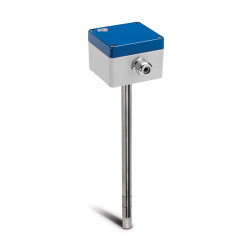
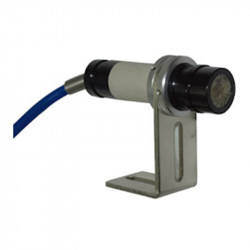
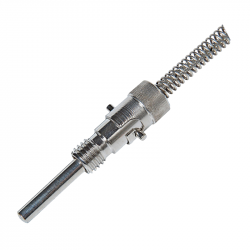
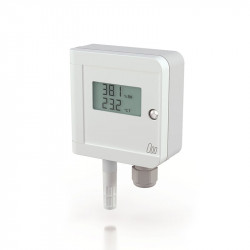
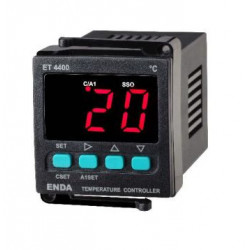
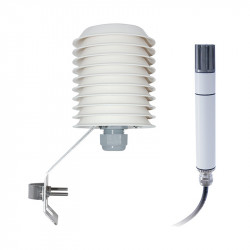
Deja un comentario